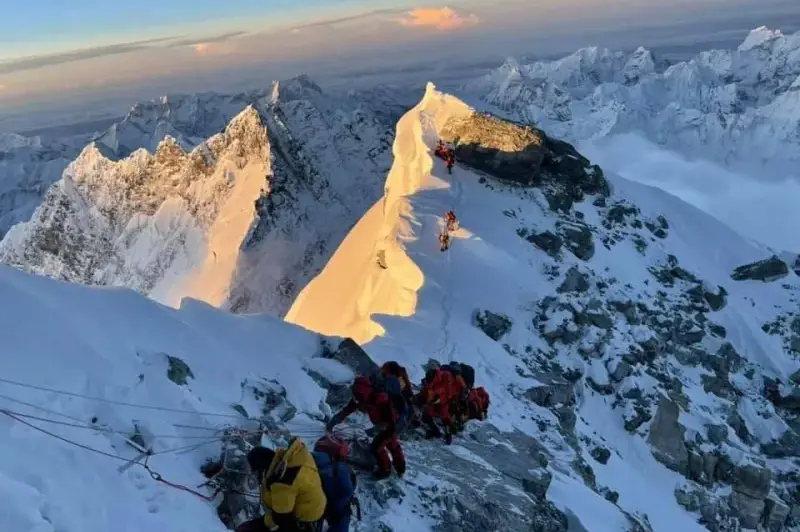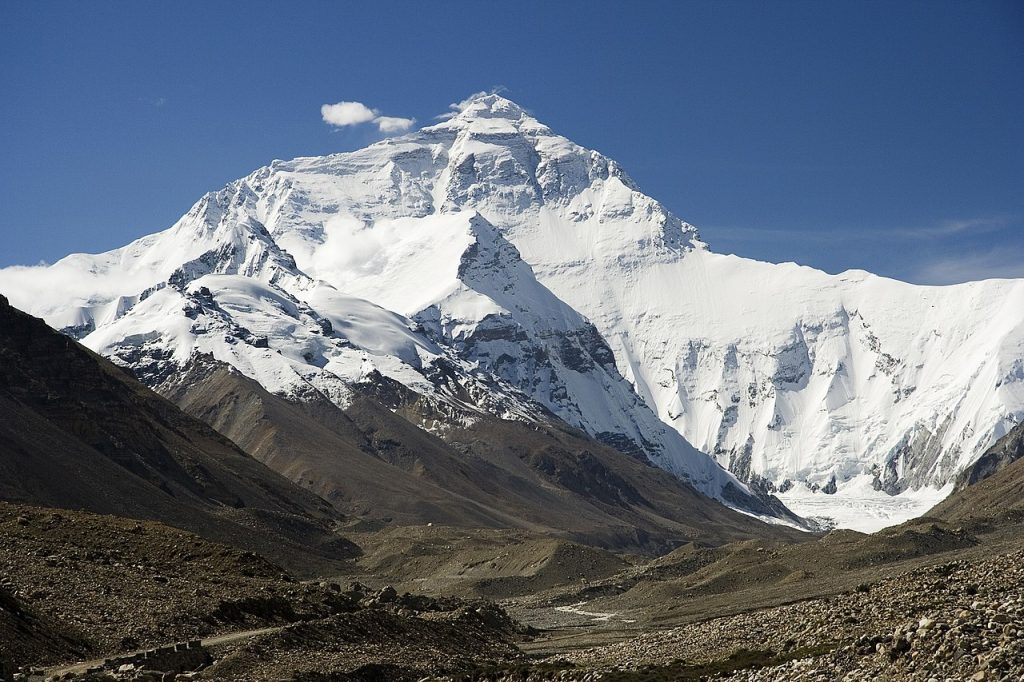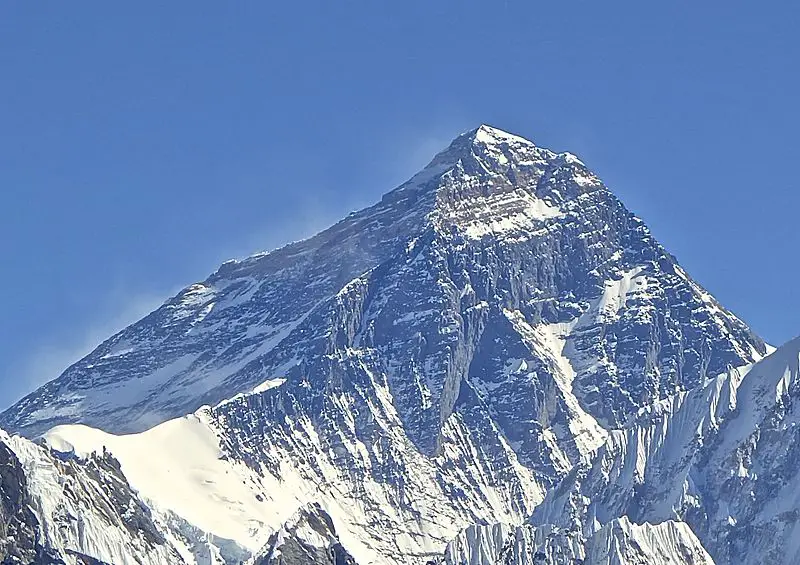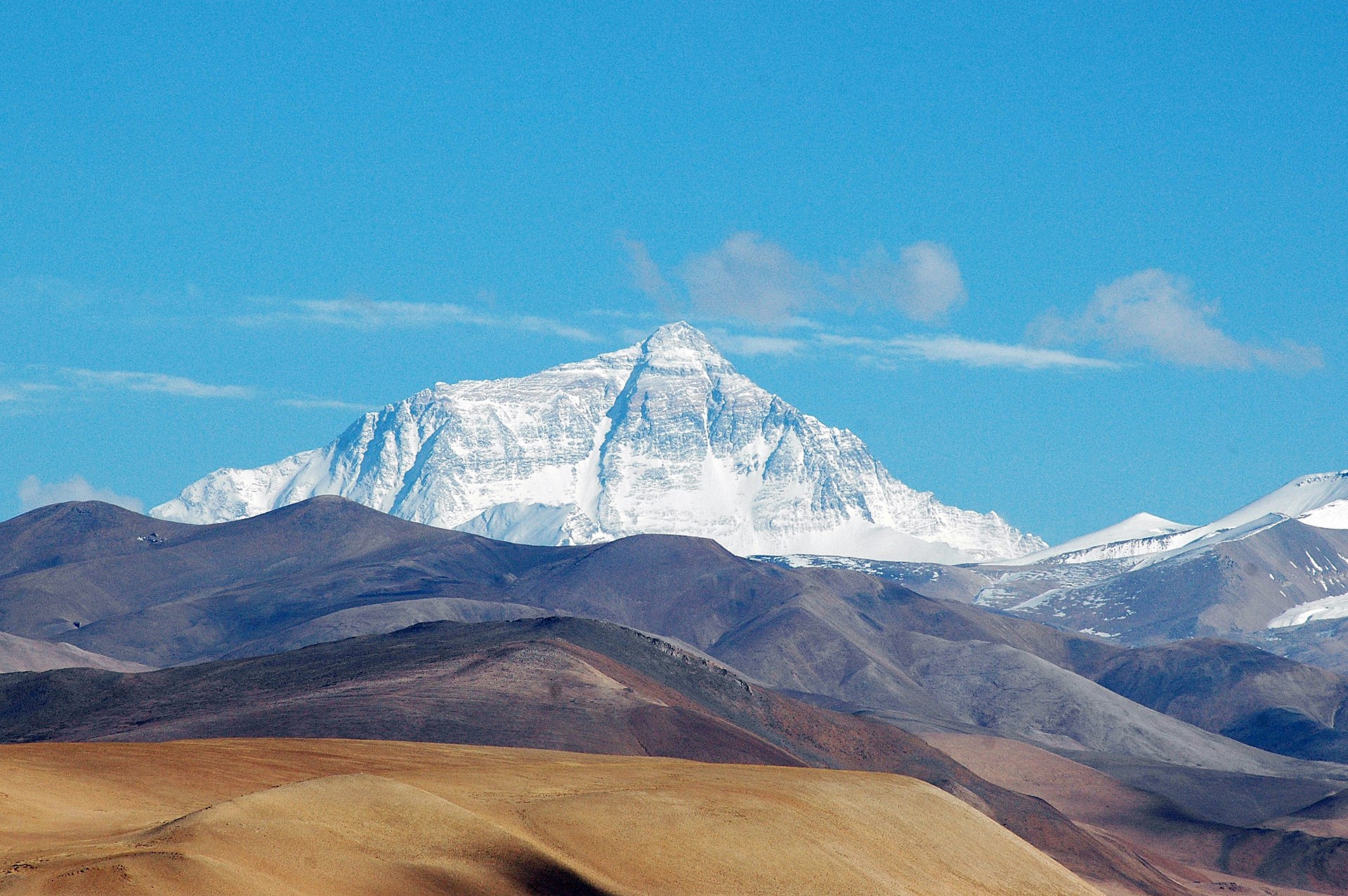To say that it has been a long and challenging year on Mt. Everest would be an understatement. After taking 2020 off due to the global pandemic, Nepal was eager to welcome visitors back to the High Himalaya. But almost from the start things haven’t gone as planned, as quarantine rules went unenforced, foreign climbers arrived in record numbers, and COVID-19 ran rampant in neighboring India.
Now, just as the summit window is preparing to open, things have taken yet another turn. On the North Side of the mountain China has canceled its Everest climbing season altogether, while on the South Side in Nepal teams have begun to abandon base camp as well.

China Draws a Line in the Snow
The week started with the news that China was drawing a “line of separation” on the summit of Everest. What that meant exactly wasn’t really clear, as there is no clearly defined border between Chinese-controlled Tibet and it’s neighbor to the south Nepal. But the goal was to try to keep climbers from straying across that line and potentially infecting North Side climbers with the coronavirus.
How one enforces that rule at 8848 meters (29,029 ft.) remains a mystery, particularly when you consider just how small the summit of Everest actually is. The message that was sent was clear however, with Chinese officials indicating that they didn’t want anyone bringing COVID into the country after being exposed at the highest point on the surface of the planet.
On Friday, just five days after making this bold proclamation, the Chinese government handed down a new decree. With COVID numbers dramatically on the rise in Nepal, all mountaineering operations were ordered to cease immediately and all alpinists were ordered to leave the North Side base camp. The Everest climbing season—at least on that side of the mountain—was over.

Will Nepal Cancel Too?
When China made the announcement of its cancellation, there were just 38 climbers on that side of the mountain. In contrast, Nepal has issued more than 400 permits to climb Everest from its side of the border. That means base camp there is much more crowded and there is a lot more at stake. After a difficult year economically, Nepal has been depending on the trekking and climbing season to help it gat back to normal. By cancelling, it not only loses some revenue this year, it will see lower revenue in the years ahead as cancelled permits are honored on future expeditions.
Thanks to an ailing economy and a turbulent politics, Nepal seems unlikely to pull the plug on the 2021 Everest climbing season. Even now, there are teams that are waiting for the next weather window—expected to open around May 20—to make a push for the summit. But as they wait, COVID continues to spread, putting not just their expeditions into jeopardy, but possibly their lives too.
Because of the deteriorating conditions and uncertainty on the South Side, German operator Furtenbach Adventures has also decided to end their climb early and head home. Guide and owner Lukas Furtenbach has been a strong advocate for climbing in the Himalaya this spring and has gone to great lengths to keep his clients safe while in BC. He tells Explorer’s Web that other teams were throwing parties and intermingling, causing COVID to spread rapidly. Even though no one on his team has tested positive, he’s decided it is no longer safe to stay on Everest.

Some Successful Summits
Despite the uncertain future of this year’s Everest climbing season, there have been some success to report. At the start of the week, a team of Sherpas finished fixing the ropes to the summit and in the process became the first to top out. Not far behind them were a number of other teams who were eager to take advantage of a good weather window.
Over the span of about two days, several large groups managed to summit. They included climbers with Seven Summit Treks, Imagine Nepal, and Peak Promotion, amongst others. British mountaineer Kenton Cool was a part of this push, earning his 15th Everest summit overall. That ties him with American Dave Hahn for the record of most summits by a non-Sherpa.
Sadly, there were two deaths to report this week as well. Swiss climber Abdul Waraich and American Puwei Liu both perished on the mountain. Waraich struggled after reaching the top and died near the South Summit, while Liu turned back near the Hillary Step and passed away while in Camp 4.
What Next?
With the jet stream now settled in over the summit of Everest, the teams will continue to wait for a new window. During that time, they’ll have more opportunities to decide whether or not they should push for the top or cancel their expeditions as well. I suspect that the longer they spend in base camp—and COVID continues to be an issue—that more of them will elect to go home. For now however, there are roughly 250 climbers standing by to attempt to reach the top.
When they do leave base camp, the climbers will face more uncertainty anyway. At the moment, all international flights in and out of Nepal are canceled, although some teams have already organized charter flights for home. COVID cases are climbing dramatically all over the country, particularly in the capital of Kathmandu. That means there is potential for exposure no matter where they go, which may lead some to believe its better to just stay on the mountain.
Either way, the Everest climbing season has turned a corner and his headed towards the finish line. Historically speaking, the middle of May usually brings stable conditions and good weather windows for a final summit push. By the end of the month, those windows will have closed until the fall, as the summer monsoon arrives in full force. That means that the next two weeks will be very interesting to watch, with some teams no doubt forging ahead, while others will likely abandon those plans once and for all.
Lets just hope that which ever decision is made, the climbers get off the mountain as safely as possible. There is a lot more at stake here than just a shiny summit certificate.
- Gear Review: The Xero Scrambler Mid is an Ultralight Hiking Shoe for Spring - March 1, 2023
- Gear Review: Yeti Roadie 48 Wheeled Cooler - August 18, 2022
- Kristin Harila Continues Pursuit of 8000-Meter Speed Record - August 16, 2022
